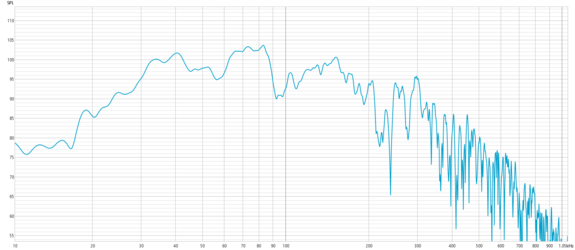achugh
New Member
Thread Starter
- Joined
- Jan 16, 2023
- Messages
- 21
More
- Preamp, Processor or Receiver
- Pioneer Elite SC-37
- Universal / Blu-ray / CD Player
- Panasonic BP-UB9000P1K
- Front Speakers
- Klipsch RF7 II
- Center Channel Speaker
- Klipsch RC64 II
- Surround Speakers
- Klipsch RB81 II
- Surround Back Speakers
- KlipschRB81 II
- Subwoofers
- Tweak City Audio CS18.2 (Dual Subs)
- Video Display Device
- LG OLED77G2PUA
- Other Equipment
- miniDSP 2x4HD, UMIK-1
Hello folks,
I have two subwoofers that I have tried to setup with REW using Mini DSP 2x2 HD. I have good loundness of 105 dbs but the bass does not feel tight. In other words, there is no impact. Can someone help me figure out what can I do to improve my response?
I do feel vibrations in the floor and my windows rattle yet there is not much of a thump that I feel on the chest.
Some things to know
EDITED
My AVR Cross Over is set to 200Hz and speakers set to SMALL. I have FULL Tower Speakers but I am not able to match the mains properly with Subs hence have set them to small for right now as I learn to first tame the subwoofers first.
Thanks in advance for your help.
- achugh
I have two subwoofers that I have tried to setup with REW using Mini DSP 2x2 HD. I have good loundness of 105 dbs but the bass does not feel tight. In other words, there is no impact. Can someone help me figure out what can I do to improve my response?
I do feel vibrations in the floor and my windows rattle yet there is not much of a thump that I feel on the chest.
Some things to know
- I do not have a back wall i.e. my room is really large as it opens into breakfast/kitchen area; I am guessing this is contributing to not being able to pressurize the room for thumping effect.
- My subwoofers are on the side instead of the front which I am guessing is adding to my problem as the sound waves are not hitting me directly. They have to hit the front wall where the TV is hung and then bounce back to me hence they lose their impact.
EDITED
My AVR Cross Over is set to 200Hz and speakers set to SMALL. I have FULL Tower Speakers but I am not able to match the mains properly with Subs hence have set them to small for right now as I learn to first tame the subwoofers first.
Thanks in advance for your help.
- achugh
Last edited:












